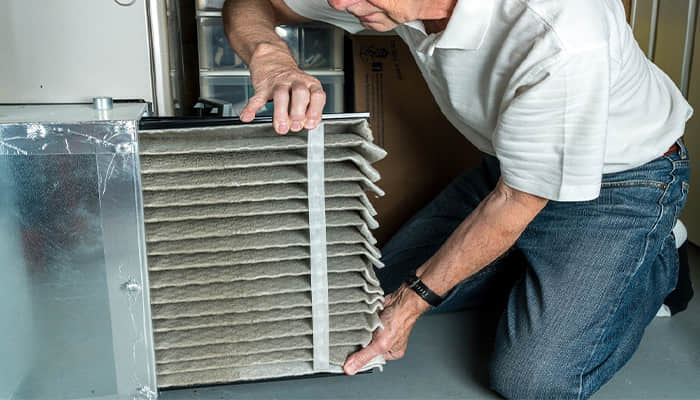9 Easy and Affordable Ways to Have a Warmer House This Winter

Winter comes again and turns your home freezing cold, making you reach for layer after layer of blankets. But energy costs are still sky-high. The good news? There are plenty of simple tricks to keep your home warmer and more energy-efficient. The best part – you don’t have to crank up the thermostat and drain your wallet with those hefty utility bills.
According to a report from the Climate and Energy Solutions Center, households in cold regions spend a whopping 35% to 50% of their energy costs on heating, proving it’s a significant chunk of your expenses.
If you’re on a budget, here are 9 simple things you can do to keep your home cozy and warm throughout the winter.
1. Rug up

If your floors are playing it cool with tiles or hardwood, throw in some carpets. These rugs not only jazz up your room’s vibe but also do a solid job of keeping the warmth in. Especially if your place has seen its fair share of winters and the floor’s got some gaps, a nice, thick carpet can be your go-to move. It’s like giving your feet a cozy hug and saying ‘No more freezing, we’re in for a toasty treat!
2. Close the curtains

Did you know up to 40% of your cozy warmth can slip away through those windows? It’s like money flying out the door! So, if you’ve got curtains, do yourself a favor – close them up before it gets dark or when you step out. That way, you’re holding onto all that toasty goodness right where it belongs – inside your home. And here’s a nifty move –get yourself a pair of thermal curtains.
3. Seal any leaks

Keep an eye out for any breezy business at home, especially around doors and windows. Hunt down those drafts and seal up the gap. This trick also helps your heating system run more efficiently.
You don’t need fancy tools – most of the stuff that works magic can be grabbed from your local hardware store, including door snakes, weather seal tape, silicone sealant or caulk, roll-up door seals, PVC door strips, stormproof seals, brush door seals, and automatic lift door seals.
4. Change the furnace filter

Doing a little yearly check-up on your furnace is a smart move. One of the most common reasons heaters go wonky is because of a dirty filter. But here’s the deal, if your furnace is only blowing out cold air, you’re already in a bit of a pickle.
In winter, it’s a good idea to switch or clean the filter on your furnace at least once a month. This helps you save on energy costs and gives your furnace a longer lifespan.
5. Try a shelf

If you’ve got some open wall space, throw up a floating shelf above your radiators, and watch the room warm up in no time. Why? Because the shelf slows down the hot air from rising too fast. Just be careful not to put anything that could get heat damage on the shelf.
6. Install insulation

In winter, about 25-35% of the heat in a poorly insulated home slips away through the roof. If you’re shelling out cash for heating and AC, swap it for a more cost-effective way by giving your home a cozy makeover with insulation.
By slapping insulation on walls, floors, and ceilings, regular folks can save a couple of hundred bucks on energy bills each year. You could DIY it, but safety first – it’s a bit risky. Better grab the pros when you’re building or sprucing up, and let them handle the insulation hustle.
7. Boil a pot of water

Whether it’s a fancy kettle or a regular ol’ pot, boiling water can bring warmth to your kitchen. During the coldest winter days, try this easy trick – let that water bubble away while you brew your favorite tea. When you take that first sip of steaming hot goodness, you’re heating up from the inside out!
8. Go for a shower, not a bath

Switching from a bath to a shower is a smart move. The hot water and steam keep the bathroom warm. When you shower, open the bathroom door if possible. That way, the warmth spreads throughout the entire house and helps fight winter dryness.
According to the U.S. Department of Energy, opting for a quick five-minute shower instead of a bath also saves water and utility bills. A bath can gulp down up to 25 gallons of hot water, while a short shower uses much less – approximately only 10 gallons.
Upgrading your showers with low-flow shower heads also dramatically reduces the consumption of water, both hot and cold.
9. Leave the oven door open

After your delicious dinner is out of the oven, we often close the door without a second thought. But why waste that precious warmth? Once your baking is done and the oven is turned off, try leaving the oven door open. Let the heat slowly spread from the kitchen to the entire house. This trick helps keep your home warm while you enjoy your meal. Just remember to keep seniors, kids, and pets away from the door.
